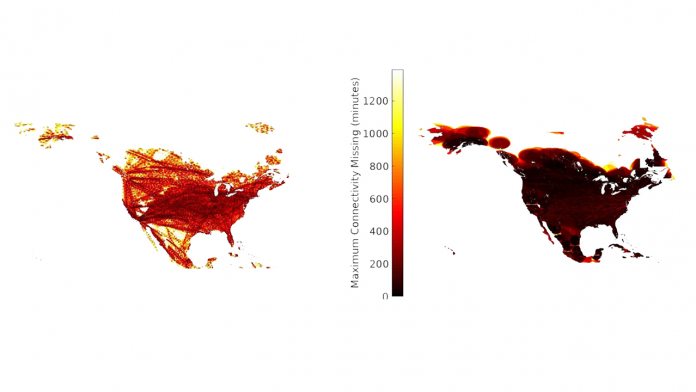TECH
Wi-Fly: Microsoft's Plan for Worldwide Internet Access Involves Commerical Airlines
The internet is rapidly becoming essential for communication and education, yet only 51% of the world's population has access. Tech companies have been working hard to solve this problem, with Facebook's Internet.org, Elon Musk's satellite plans, and Google's internet balloons.However, all of them have a major problem. They require the launch of expensive infrastructure that is not yet required and often requires regulatory approval. Microsoft Research's latest idea wants to provide access to an existing infrastructure: airplanes.The Wi-Fly project would use license-free WiFi spectrum and routers on commercial aircraft, connecting to inexpensive repeaters on the ground. Due to the large volume of flights with high-quality WiFi, Microsoft believes it could provide internet coverage to much of the globe.Though it would be spotty in some areas, the plan could still provide coverage for at least 10 hours a day to much of Africa, even with conservative estimates. Regions like the continental US could expect much higher and more frequent coverage due to the high volume of internet-connected flights. Microsoft has even tested its theory with a small aircraft with relatively few problems.

left: continental US with conservative estimates right: estimate with 10dmb gains at reciver and transmitter
Airline Adoption
However, reaching those numbers would require mass adoption by airlines. Each plane would need instruments attached to the outside, which could require additional maintenance. Microsoft proposes a subsidized scheme that would pair ISP's, airlines, and governments in a mutually beneficial arrangement.
If it took off, airlines would even be able to adjust flight paths to provide better coverage. This would have the benefit of providing internet not just to users, but important scientific sensors across the world.
However, reaching those numbers would require mass adoption by airlines. Each plane would need instruments attached to the outside, which could require additional maintenance. Microsoft proposes a subsidized scheme that would pair ISP's, airlines, and governments in a mutually beneficial arrangement.
If it took off, airlines would even be able to adjust flight paths to provide better coverage. This would have the benefit of providing internet not just to users, but important scientific sensors across the world.
Even so, it's worth noting that this would not be easy. As well as adoption, the project would require the design of a unique MAC protocol. Clients would need to know which plane to connect to at which time, and which could provide the best signal. To remain connected to IoT devices, the Wi-Fly base antennas would need an intelligent low-power mode.
Thankfully, Microsoft does not expect regulatory approval to be a big issue here. An analysis of restrictions in several countries seems to indicate that the system could use the 2.4 GHz band for license-exempt devices.
In the short term, Wi-Fly could be one of the best shots we have for global internet coverage, and it will be interesting to watch it develop further. You can read the full paper here.
Thankfully, Microsoft does not expect regulatory approval to be a big issue here. An analysis of restrictions in several countries seems to indicate that the system could use the 2.4 GHz band for license-exempt devices.
In the short term, Wi-Fly could be one of the best shots we have for global internet coverage, and it will be interesting to watch it develop further. You can read the full paper here.
Ryan Maskell

No comments:
Post a Comment